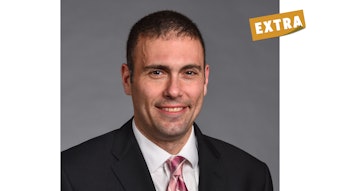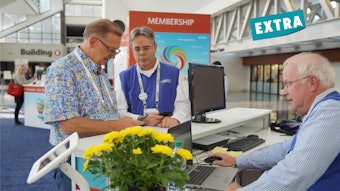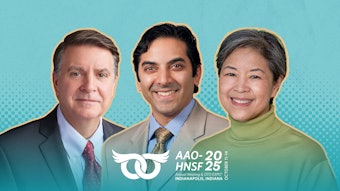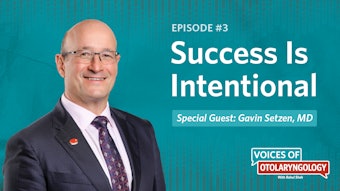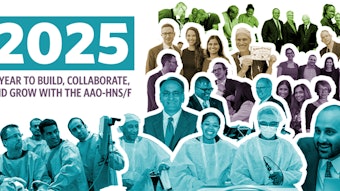Mastering Virtual Medical Offices and Virtual Staffing
Technology cannot fully replace staff in high-touch fields like medicine, but virtual medical staffing can be part of the solution.
Afser Shariff, MD
(See author’s disclosures at the end of this article.)

Companies focusing on technological solutions to help solve their personnel challenges often find themselves back at square one. They are realizing that technology is a tool that empowers their best team members to perform at their highest levels. Technology cannot replace staff in high-touch fields like medicine. Despite using technological tools at their capacities, physicians, office administrators, managers, and team leaders are experiencing burnout trying to run their operations with thinly staffed teams.
In 2023, the Medical Group Management Association (MGMA) reported a decrease in 5.08 total support staff per full-time equivalent (FTE) physician in 2019, down to 3.0 in 2022 for physician-owned practices.1 MGMA estimates this all has led to 15% revenue decreases for physician-owned surgical specialty practices over the past few years. “As a result of decreased staffing levels, practice leaders reported lost productivity, worsening staff morale, more time spent on staff recruitment, and increased expenses from temporary or contract workers hired to fill gaps. Patient experience also took a hit because of patient access impacts and decreased care coordination, practice leaders said,” reported MGMA’s 2023 DataDive Cost and Revenue report.1 Additionally, the Association of American Medical Colleges (AAMC) estimates estimates there will be a shortage of 124,000 physicians by 2034—and this shortage will extend to support staff. Currently, “normal” staffing shortages are estimated to remain at 15%–30% nationwide.2
VMSCs are part of the solution. These companies build custom work solutions for practices. The VMSC takes care of all the HR work, such as regulatory paperwork, counseling, managing absenteeism, health insurance/retirement plans, and continual training. They hire and develop people for practices at a cost lower than what most practices can achieve on their own. VMSCs take on the expense of background checks, specialty training, electronic record system training, and tasks ranging from medical assisting, scribing, coding, billing, account management, answering phones, scheduling appointments, and managing patient care coordination. The practices can focus on patient care and improving profit centers.
The first adopters of VMSCs have been small practices. The one- to two-person physician practices turned to virtual staffing. This was followed by larger practices and now large health systems are looking at ways to maintain their expansive footprint when they have no physical employees to report to newly constructed locations.
A virtual employee or assistant (VA) through a VMSC costs less than a remote employee. Remote employees still require administrative time for practices along with payroll costs, taxes, benefits, absentee issues, IT expenses, and more. A VMSC employee comes at a flat hourly cost with minimal administrative time. There are no costs for Federal Insurance Contributions Act (FICA), Federal Unemployment Tax Act (FUTA), 401k, health insurance, workers’ compensation, computer costs, office space expenses, and other potential expenses.
Depending on the level of qualifications/certifications, skill sets, compliance/regulatory measures, quality control mechanisms, and level of practice engagement, the costs of a VMSC employee can range from $12 to $16 per hour ($14 average). The average hourly pay for an employee in a medical practice with benefits and taxes runs over $22 per hour. The $8 per hour difference adds up to a minimal annual cost savings of $15,360. Most organizations embracing virtual staffing use two or more virtual staff, resulting in annual recurring savings exceeding $30,000.
If a practice’s goal is to outsource an isolated scope of work, most can meet that objective. If the goal is to build a virtual team that amplifies onsite physical teams’ performance, then choosing a staffing company is like choosing an architect or builder for your home or office. A poorly designed or poorly built structure will require more effort and money over time. The right virtual staffing company can improve profitability and quality of life for a practice.
From solo practices to 1,000-clinician groups, VMODs and virtual medical office administrators (VMOA) help design and manage an online version of an organization. These platforms take care of many office functions. By creating a parallel process of taking care of patients outside the physical office while also helping patients in the physical office, the virtual office greatly reduces the burdens of onsite staff. VMOD/VMOA solutions help address the burnout felt by doctors, administrators, and staff.
VMOD and VMOA can also help practices create new profit centers through a resource pool sharing structure. Resource pool sharing creates revenue opportunities and cost savings for practices. Like an ambulatory surgery center in organizational and investment structures, VMOD and VMOA build practice workflow operations that are optimized with the help of participating investor practices and resold to practices in need of better efficiencies. These new ancillaries make money for practices by helping to develop and sell creative intellectual property products.
For those ready to explore virtual staffing, the following questions can help kick off the endeavor.
Identifying Your Needs
Be sure that a VA is the answer to your staffing challenges. Ask yourself the following:
- Who in my clinic will coordinate training and communication with our VA?
- What are the specific tasks and workflow requirements?
- Do we have checklists in place to onboard new staff and VAs?
- How would I integrate the VAs into our workflow without upsetting in-house staff who might be resistant to or unfamiliar with VAs?
Vetting a VMSC
- How long have you been providing VAs?
- How many healthcare groups do you work with?
- What specialties and EHRs do you work with?
- What is the training, mentorship, and certification process of your VAs?
- Will my team and I have to train the VA and, if so, for how long?
- What do you do if a doctor’s regular VA is suddenly ill or absent from work for an extended period?
- What is the security of your VAs’ office facilities and IT systems?
- Do you employ VAs who work from home? (Note this practice is often not secure or HIPAA-compliant. Moreover, it is difficult to manage the reliability and work performance of an at-home VA.)
- How robust is your IT infrastructure? Do you have multiple secure fiberoptic networks?
With dwindling supplies of workers in much of the world, keep in mind that technology removes the human connection that is often vital in the medical field. Add to that an aging population requiring more care, declining reimbursements, and increasing salaries and costs of technology, it is no wonder that many practices are struggling. But practices early to adopt the virtual office and virtual staffing are already reaping the benefits of decreased mental stress, lower overhead, and growth.

Disclosures: Dr. Shariff is an otolaryngologist in private practice in Ohio. In 2007, he founded Physicians Angels, a virtual medical staffing company. He is a virtual medical office developer and provides consulting services for healthcare organizations.
Disclaimer: This article does not constitute the endorsement of any service, and all opinions are those of the author and may or may not be shared by the AAO-HNS.
References
- MGMA. DataDive Cost and Revenue Report. Medical Group Management Association. MGMA; 2023.
- IHS Markit Ltd. The Complexities of Physician Supply and Demand: Projections From 2019 to 2034. Washington, DC: AAMC; 2021. https://www.milbank.org/wp-content/uploads/2023/04/aamc-2021-physician-supply-and-demand-projections-060921.pdf.

